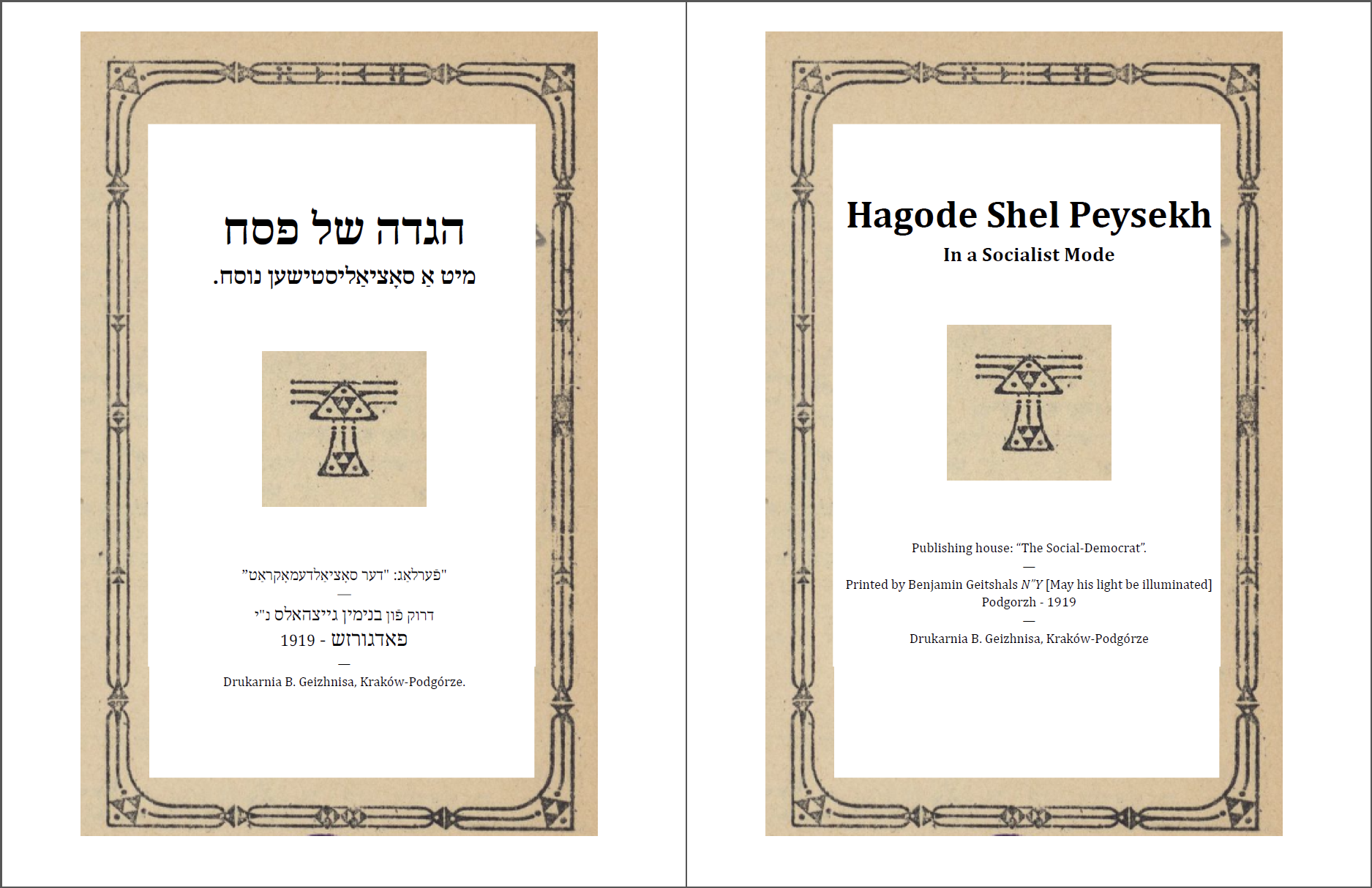DOWNLOAD:
Hagode (Yiddish-English) PDF | ODT
Hagode im perush socialisti (Hebrew/Aramaic-Yiddish) PDF | ODT
Hagode Shel Peysekh: in a Socialist Mode (2025) by Shlomo Jack Enkin Lews is a full Yiddish transcription and English translation of the 1919 edition of a Bundist haggadah. The initial version of this haggadah was written in 1886 in London for the socialist newspaper Arbeyter fraynd. The authors were the activists Leon Zolotkof (1866-1938) and Benjamin Feigenbaum (1860–1932), who wrote together under the pseudonym “Der Nayer Velt-Magid” (The New World-Preacher). Their haggadah was released in Vilna and printed by the famous “Rom” printing-house in the year 1887. The same version was later printed in London by the Arbeter fraynd in 1888. A second, highly modified, version was printed about ten years later in 1896 by the “‘Farvaltungs-rat’ fun broshurn fun di yidish shprekhendike sektsyonen S.A.P. fun nord-amerike” in New York City. The 1896 version is ideologically quite different from the 1886 version (in general less militant), and includes many wholly original sections, including the entire “socialist Hallel” section. It is this 1896 version that was “released in America,” and that forms the basis of the 1919 version. In the year 1900 in Geneva, Switzerland, the “Algemeyner yidisher arbeter-bund in rusland un poyln” released a version of this Haggadah based on the New York text with small modifications and additions, most of which make it into this 1919 version. Finally, in 1910 and in 1919, in Kraków-Podgórze, the “Sotsyaldemokrat” (evidently an organ of the “Yidisher sotsyal-demokratisher partey in galitsyen,” known as the “Galician Bund”), published two versions based on the Bund’s 1900 Haggadah, with several modifications. The latter of these two versions is the version that has been transcribed and translated in full by Shlomo Jack here. (They are currently working on translating the major portions of the 1886/8 and 1900 versions that did not make it into the 1919 edition.)
The translation was completed in April 2025, after having begun a few years prior. The work was partially funded by the Foundation for Yiddish Culture in Montreal, on the condition that the translator would add an introduction and release the work under a Creative Commons libre Open Access license. Shlomo Jack adds, “I suggest this for fun, inspiration, and liturgical use. I am purposefully uploading this in time for May Day / international Labour day.”

Source (Yiddish) Translation (English)
דער דאָזיקער פאַראָדישער פירוש אויף דער טראַדיציאָנעלער “הגדה של פסח,” וואָס איז געשריבן געוואָרן מתּוך ווייטיק און קאַמף אויף כדי צו פֿאַרשטאַרקן דער סאָציאַליזם, איז אַ פראַכטפולע און רירנטע שטיק פֿון אונזער ייִדישע ירושה. דאָ ווערט פֿאָרגעשטעלט דער גאַנצער אָריגינעלער טעקסט, אָן קיין שום ענדערונגען אָדער צענזור. דערפֿאַר מוז איך באַוואָרנען דעם לייענער: לייענט קריטיש!!
This parodic commentary on the traditional Passover Hagode, which was written from a place of pain and struggle as a way of teaching and promoting socialism by radically re-reading the Passover story, is a brilliant and moving piece of our Jewish heritage. This translation does not censor or alter the original text; rather it attempts to convey this text in its entirety. As such, I have a warning for the reader: read critically!!
In addition to the translation, in Hagode im perush socialisti the Yiddish text has been laid out by Shlomo Jack as a gloss in marginalia surrounding the traditional Hebrew-Aramaic text of the Pesaḥ haggadah.

Source




